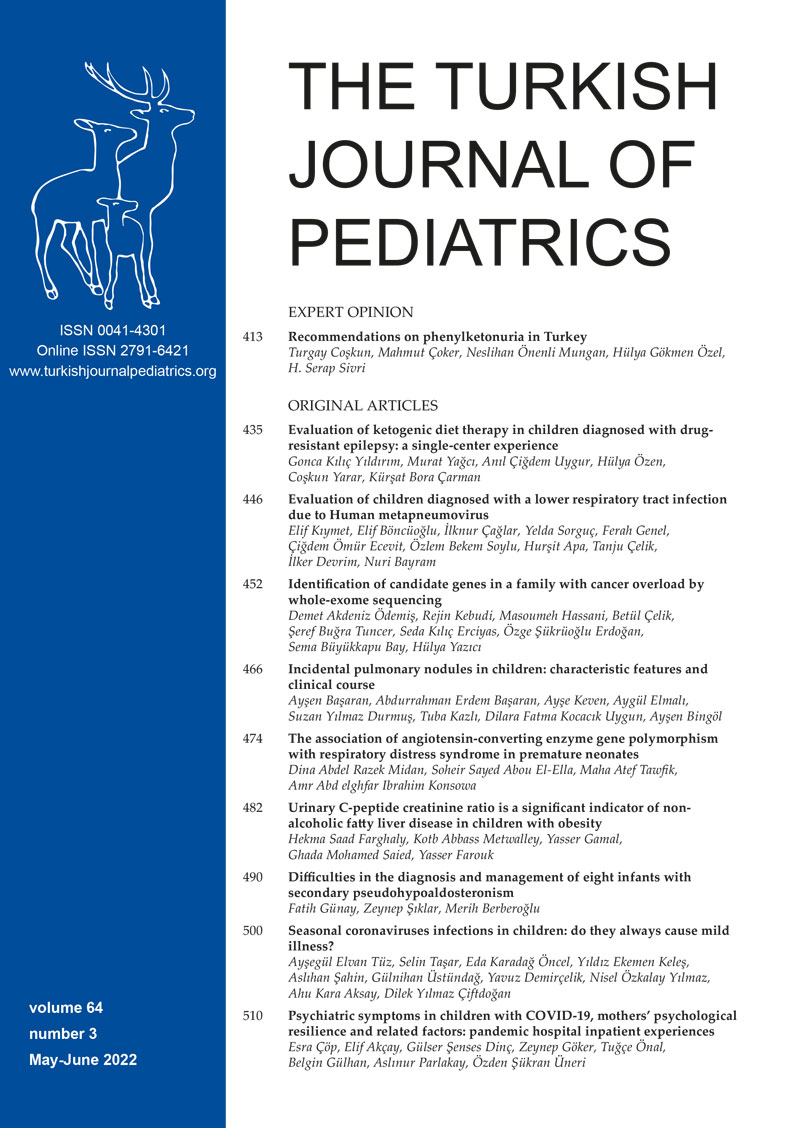Abstract
Background. Type 1 pseudohypoaldosteronism (PHA1) is a rare condition characterized by the resistance of the kidney to the effect of aldosterone. Secondary PHA1 is a syndrome that is most often related to urinary tract anomalies (UTAs) and/or urinary tract infections (UTIs). A similar pattern of electrolyte impairment is seen in congenital adrenal hyperplasia (CAH) and secondary PHA1, and CAH is a condition that requires urgent treatment. In our study, eight patients aged between 15 days and 8 months (seven males and one female) were included in the evaluation. It was aimed to evaluate cases of secondary PHA1 in our clinic and to identify the problems encountered in diagnosis and follow-up.
Methods. The records of the patients who presented to our hospital between February 2010 and 2021 were retrieved and retrospectively scanned.
Results. In all cases, hyponatremia, hyperkalemia, hyperaldosteronism, and hyperreninemia were detected. Other biochemical and hormonal tests were normal. Leukocytosis was detected in urine analysis, and urine cultures were productive. UTA was detected in five cases. Nine episodes of PHA1 occurred in eight patients and fungal infections were responsible for causing two episodes. Four episodes of PHA1 needed mineralocorticoid treatment. On the third day, serum electrolytes normalized. Fludrocortisone treatment was continued for 1 week. In one case, UTIs were repeated with PHA1, but in the follow-up, there were no additional problems.
Conclusions. Secondary PHA1 should be kept in mind when hyponatremia and hyperkalemia are seen, especially in infants aged under 3 months or older, up to 8 months, who present with non-specific symptoms. Fungal infections should not be forgotten in UTI etiology because PHA1 episodes can be initiated. If CAH is suspected, mineralocorticoid treatment should be rapidly initiated.
Keywords: fungal urinary infection, secondary pseudohypoaldosteronism, urinary tract anomaly, urinary tract infection
Copyright and license
Copyright © 2022 The Author(s). This is an open access article distributed under the Creative Commons Attribution License (CC BY), which permits unrestricted use, distribution, and reproduction in any medium or format, provided the original work is properly cited.














